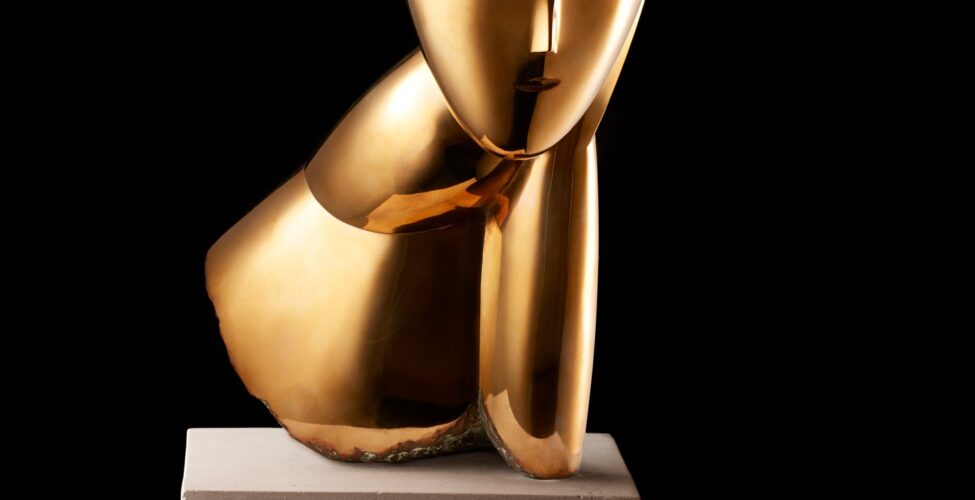Constantin Brancusi’s polished bronze A Muse is one of the anchors of the Museum’s collection of European modern art. The sculpture is a refined distillation of a woman’s facial features. A muse is a person, or a personified force, that inspires artistic creation. Brancusi depicted this subject several times, making versions in marble, plaster, and bronze. The first one, Sleeping Muse from 1909, is a carved marble work of an egg-shaped head lying on its side; it is now in the collection of the Hirshhorn Museum. Later Brancusi turned the head upright, placing the oval face on an elongated neck and shoulder. The artist based the works on the likeness of one of his frequent models, Renée Frachon. She recalled how the sculptor “asked me to sit down and to close my eyes, to keep my face still so that he could capture the expression of serenity one has in sleep”. Three years ago, A Muse received an extensive conservation treatment and study that revealed the presence of gold leaf in the sculpture’s stylized hair. Our conservation team carefully returned a lustrous shine to the work (Brancusi wanted his bronzes to be kept highly polished). We took these glamour shots to show off its rejuvenated look. You can read more about this process on PAM’s website.
—Sara Krajewski, The Robert and Mercedes Eichholz Curator of Modern and Contemporary Art



Constantin Brancusi (Romanian, 1876–1957), A Muse, 1918. Bronze on limestone base. Gift of Miss Sally Lewis, 59.15



